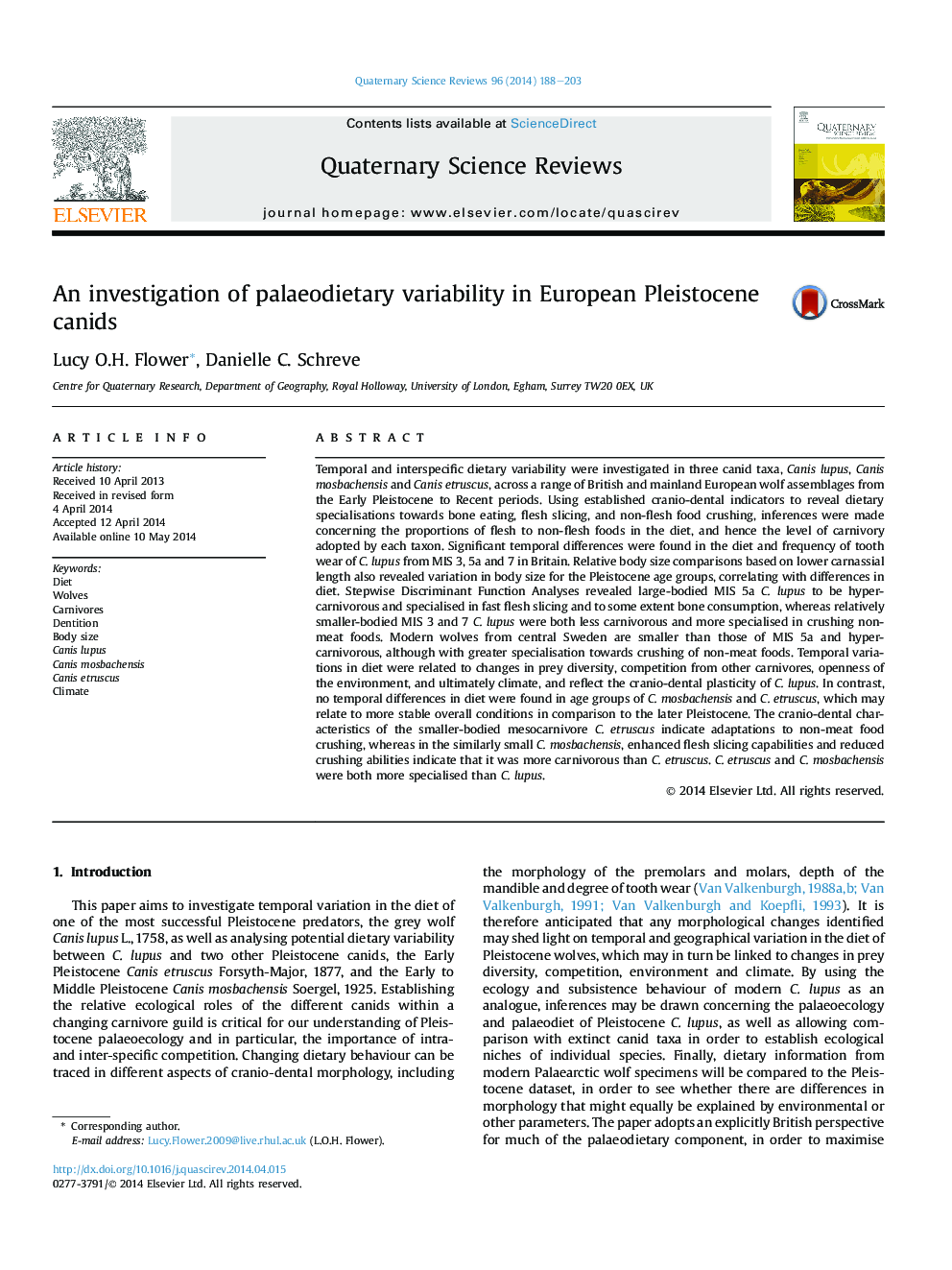| کد مقاله | کد نشریه | سال انتشار | مقاله انگلیسی | نسخه تمام متن |
|---|---|---|---|---|
| 4735387 | 1640838 | 2014 | 16 صفحه PDF | دانلود رایگان |
• Temporal and interspecific dietary variation investigated in Pleistocene canids.
• Significant temporal variation found in British Canis lupus from MIS 3, 5a and 7.
• Dietary variation is climate related, reflecting cranio-dental plasticity.
• Canis etruscus more omnivorous than Canis mosbachensis and C. lupus.
• Species differences reflect changing competitive constraints.
Temporal and interspecific dietary variability were investigated in three canid taxa, Canis lupus, Canis mosbachensis and Canis etruscus, across a range of British and mainland European wolf assemblages from the Early Pleistocene to Recent periods. Using established cranio-dental indicators to reveal dietary specialisations towards bone eating, flesh slicing, and non-flesh food crushing, inferences were made concerning the proportions of flesh to non-flesh foods in the diet, and hence the level of carnivory adopted by each taxon. Significant temporal differences were found in the diet and frequency of tooth wear of C. lupus from MIS 3, 5a and 7 in Britain. Relative body size comparisons based on lower carnassial length also revealed variation in body size for the Pleistocene age groups, correlating with differences in diet. Stepwise Discriminant Function Analyses revealed large-bodied MIS 5a C. lupus to be hypercarnivorous and specialised in fast flesh slicing and to some extent bone consumption, whereas relatively smaller-bodied MIS 3 and 7 C. lupus were both less carnivorous and more specialised in crushing non-meat foods. Modern wolves from central Sweden are smaller than those of MIS 5a and hypercarnivorous, although with greater specialisation towards crushing of non-meat foods. Temporal variations in diet were related to changes in prey diversity, competition from other carnivores, openness of the environment, and ultimately climate, and reflect the cranio-dental plasticity of C. lupus. In contrast, no temporal differences in diet were found in age groups of C. mosbachensis and C. etruscus, which may relate to more stable overall conditions in comparison to the later Pleistocene. The cranio-dental characteristics of the smaller-bodied mesocarnivore C. etruscus indicate adaptations to non-meat food crushing, whereas in the similarly small C. mosbachensis, enhanced flesh slicing capabilities and reduced crushing abilities indicate that it was more carnivorous than C. etruscus. C. etruscus and C. mosbachensis were both more specialised than C. lupus.
Journal: Quaternary Science Reviews - Volume 96, 15 July 2014, Pages 188–203
